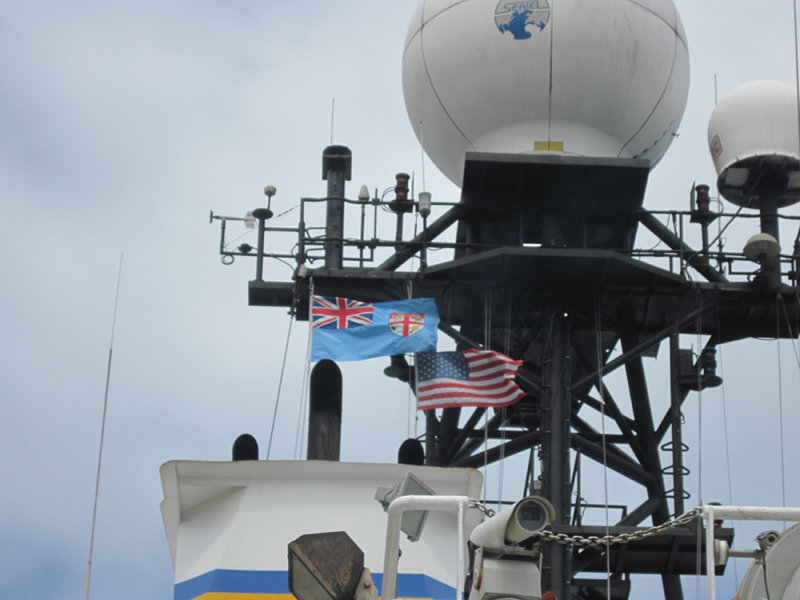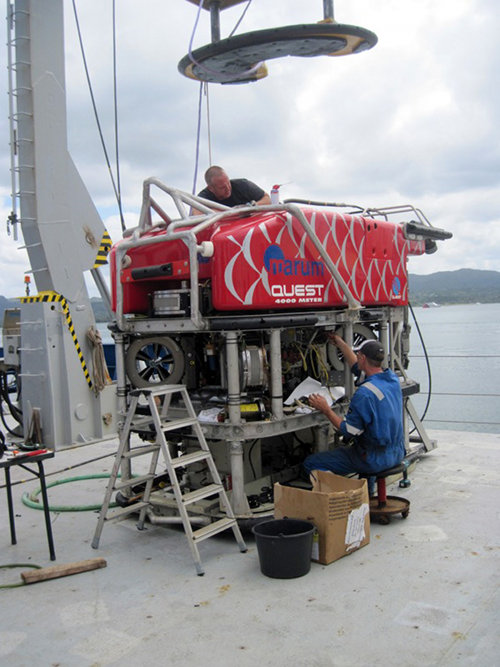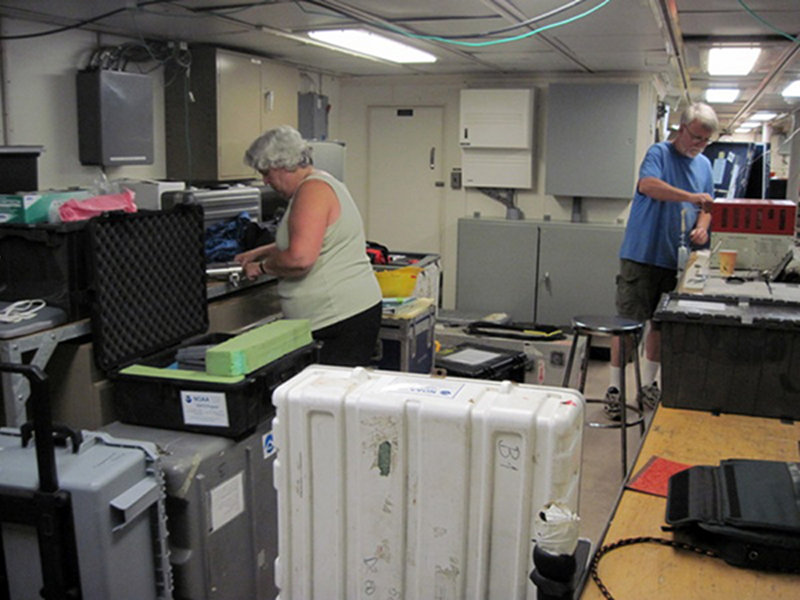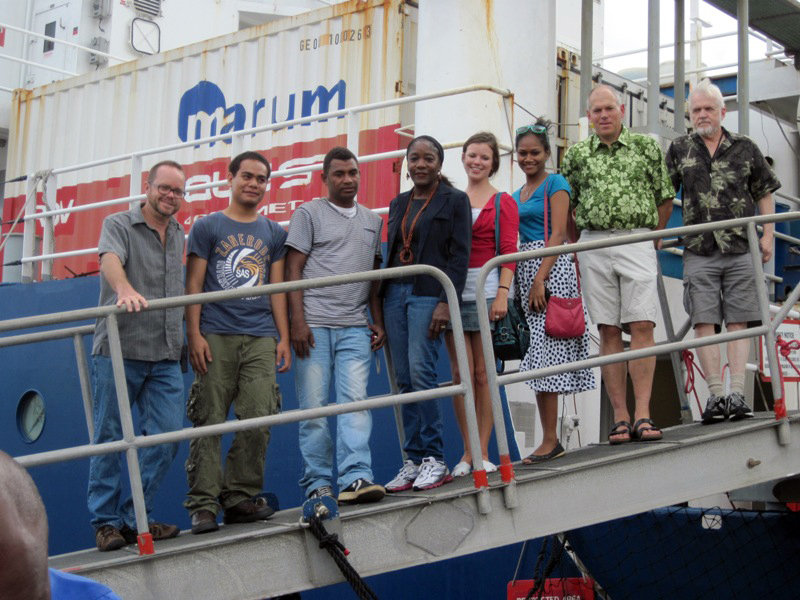
By Paula Keener, Marine Biologist - Director, Education Programs, NOAA Ocean Exploration & Research
September 9, 2012
0202 GMT
Wind – E @ 5 kts
Air Temperature – 25.7°C (78.2°F)
Sea State – 1.3m

The Fijian and U.S. flags fly high atop the mast of the R/V Roger Revelle while in port in Suva, Fiji. Image courtesy of Submarine Ring of Fire 2012: Northeast Lau Basin, NOAA-OER. Download larger version (jpg, 3.1 MB).
A total of 35 scientists and 21 crew from 15 organizations representing the U.S., Australia, New Zealand, and Germany departed Suva, Fiji today and are making the R/V Roger Revelle their home for approximately the next three weeks as they launch the first broad scale exploration for hydrothermal vents at seamounts and spreading centers in the Northeast Lau Basin in the Western Pacific. Using the Quest 4000 remotely operated vehicle (ROV) from the University of Bremen in Germany, scientists will take a closer look at exploration targets identified during the last mission to the area in 2010. It was during this mission two years ago that exploration activities were conducted over seven submarine volcanoes known as the North Mata volcanoes and other hydrothermally active sites in the Northeast Lau Basin. Hydrothermal activity was detected over six of the North Matas, and now scientists are returning with more sophisticated equipment and more diverse expertise to continue explorations in the most volcanically-active area of the planet.

ROV technicians from the University of Bremen in Germany prepare the Quest 4000 for work in the Northeast Lau Basin shortly after arrival on the R/V Roger Revelle. Image courtesy of Submarine Ring of Fire 2012: Northeast Lau Basin, NOAA-OER. Download image (jpg, 84 KB).
During the past two days, scientists carrying their supplies and equipment have boarded the 273-foot ship, operated by the Scripps Institution of Oceanography and owned by the U.S. Navy. Using screw drivers, wrenches, duct tape, rope and twine; the main lab, computer lab, ROV, ROV van, CTD, telepresence system, biology lab, and wet lab have been set up and secured for departure. It will take approximately 30 hours steaming at about 12 knots before reaching our first exploration target, Vai Lili in the southernmost portion of the study area.

Scientists on the Northeast Lau Basin Exploration Team unpack and set up equipment as they prepare their at-sea work spaces in the ship’s main lab. Image courtesy of Submarine Ring of Fire 2012: Northeast Lau Basin, NOAA-OER. Download image (jpg, 98 KB).

The U.S. Ambassador, Ms. Frankie Reed (fourth from left), joins Chief Scientists, Drs. Joe Resing (second from right) and Robert Embley (right), the ship’s Captain, Wes Hill (left) and students from the University of the South Pacific as they board the R/V Roger Revelle. Image courtesy of Submarine Ring of Fire 2012: Northeast Lau Basin, NOAA-OER. Download image (jpg, 152 KB).
Approximately 50 university students, journalists, television media, staff of the U.S. Embassy and U.S. Ambassador Frankie Reed were given tours of the ship as they learned about the unique deepwater geology and associated ecosystems in the Lau Basin and the unique technologies used by the science team to explore them. All had the opportunity to see the Quest 4000 ROV, sit inside the small ROV control van and view very impressive high definition underwater video from previous dives in other parts of the world ocean.